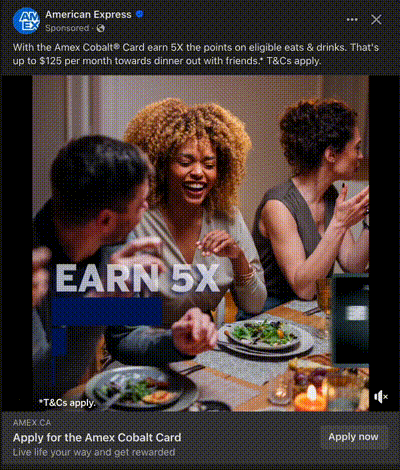With the success of the social media phenomenon, marketers continuously utilize Meta in their advertising strategies. Here’s what you need to know if you want to add Meta as part of your strategies as well.
Platforms like Meta continue to dominate the social media advertising scene, especially with Facebook rebranding to Meta several years ago in order to better integrate its acquisition of Instagram. Meta continues to power advertisers’ core advertising strategies as the platform develops and innovates, bringing a top-the-of-the-line ad performance. Here’s what you need to know if you want to add Meta as part of your strategies as well.
What is Meta advertising?
Meta advertising through the years
Meta advertising has been around for more than a decade, dating back to 2004 in the platform’s infancy stages when it offered ‘flyers‘ and bits and pieces of ad space to companies in exchange for a small financial cushion to get the platform off the ground.
However, it wasn’t until 2007 when Facebook officially launched its ‘Facebook Ads’ platform which allowed businesses to create individual profiles as well as “social ads” which were ads that combined social actions from a user’s friends (such as recent purchase of a business review) with an advertiser’s message.
Several years later, it introduced ‘Sponsored Stories’, a desktop ad program that placed paid ads directly on users’ news feeds as well as expansion to mobile ads. By 2014, Facebook rolled out its three-level advertising campaign structure, offering “campaigns” and “ad sets” on top of standard ads.
Campaigns consisted of overarching plans that correspond to specific advertising objectives and were designed to help users optimize and measure results of individual ads.
Ad sets, on the other hand, are subsets of a campaign that could feature their own budgets and target separate audience segments. Facebook ads expanded its ad formats, featuring eight separate advertising options such as: photo, video, stories, Messenger, Marketplace, carousel, slideshow, collection, and playable content.
With the rebranding of Facebook to Meta, new technology and trends will bring new formats to explore and familiar processes to refine.
How does it work?
At its core, meta ads are ads served to users based on their previous interactions and behaviors online. They leverage data collected about individuals’ browsing habits, search history, and other online activities to deliver ads that are highly relevant and personalized.
Meta ads make use of ‘cookies’. When a user visits a website or engages with an online platform, a cookie is placed on their device. This cookie collects information about the user’s activities (such as the websites they visit, the products they browse, etc.). This data is then used to create a comprehensive profile of the user, which includes their interests, preferences, and demographics. Advertisers can then use this information to target specific groups of users who are most likely to be interested in their products or services.
However, with the deprecation of third-party cookies by companies like Apple and Google in early 2024, Meta has taken it upon themselves to create more in-house data integrations in its platform via the Conversions API. The Conversions API is designed to create a connection between an advertiser’s marketing data from an advertiser’s server, website platform, mobile app, or CRM to Meta systems that optimize ad targeting, decrease cost per result and measure outcomes. In other words, the Conversions API tool helps advertisers use their own marketing data to optimize ad targeting, and is built to honor people’s privacy preferences without it being dependent on browser technologies that collect third-party cookies.
Meta ads also utilize advanced algorithms and machine learning to analyze and interpret the collected data. These algorithms are constantly improving and evolving, allowing advertisers to deliver highly targeted ad campaigns that generate better results.
Another important feature of meta ads is retargeting. This strategy involves showing ads to users who have previously interacted with a brand or visited their website. By reminding these users of their previous interests, retargeting aims to bring them back into the sales funnel and increase the chances of conversion.
Forms and types of Meta advertising
Meta ads offer various ad formats and placement options. They can be displayed on social media platforms, search engines, mobile apps, and websites, ensuring maximum reach and visibility. According to Meta, there are five main types of Meta ads:
- Image: this type of Meta ad consists of one image that usually contains a call to action and an attached link;
- Video: these types of ads are in the form of videos which make content more easily digestible and eye-catching for the user;
- Carousel: carousel ads showcase up to 10 images or videos in a single ad, each with its own link;
- Instant Experience: a fullscreen experience that opens after someone taps your ad on a mobile device;
- Collection: features multiple products and opens as an Instant Experience when someone interacts with it. Customers can discover, browse, and purchase products from their phones in a visual and immersive way;


PDFSimpli’s carousel ad shows its product features on each panel
In addition, there are other types of Meta ads that derive from the five main types:
- Slideshow ads: slideshow ads use images and videos (usually a minimum of 3 and up to 10 images or videos) to portray a story in slideshow form, appearing as videos cycling through slides and transitions. Slideshow ads can help illustrate a complicated sequence or simplify a complex process;
- Dynamic product ads: these are typically image or video ads that often change or are tailored according to users’ browsing habits, often used for re-marketing as you are promoting a product to already interested customers;
- Lead form ads: these ads direct users to a fillable form Fields are typically customized to obtain specific data that marketers want from users;
- Collection ads: collection ads entail a cover image or video with several products showcased under the cover image. When a user clicks on one of the images or videos, it will open the Instant Experience ad and show the rest of the product collection;
- Event ads: some brands make use of the “Events” feature on Meta to promote and advertise certain events and products, offering a unique way of showcasing their brand;
- Messenger ads: messenger ads appear on the messenger feature of Meta (typically in between your conversations). Users will see a call to action that will end up in the destination you set when create the messenger ad;
- Marketplace ads: marketplace ads make use of Meta’s marketplace feature and are typically used for businesses wanting to reach more people who are browsing in the marketplace. Ads in the marketplace will both show in the marketplace as well as in people’s news feeds and will display a “Sponsored” label on the ad;
- Stories ads: stories ads are Meta ads that make use of the “Stories” feature, providing a fast and natural full-screen and vertical view of the brand’s ads;
- Poll ads: these make use of polls (typically appearing at the bottom of photos and videos) on the “Stories” feature, offering brands the opportunity to engage with the users;
Why invest in Meta advertising?
Meta continues to be a popular form of online advertising for marketers worldwide as evidenced by the consumption of users and ad spend by companies on the platform. According to Insider Intelligence, Meta still accounts for 75% of US ad dollars spent on social media for 2023.
In addition, Facebook accounts for more than half (54.6%) of Meta’s $51.35 billion in US ad revenues this year. Furthermore, Meta and Instagram are still the kings of social spend compared to TikTok’s 9% social spend.
With the mass variety of ad forms and the vast user reach on the platform, it offers a lot of flexibility and customization options for marketers that are tailored to their goals and ad purpose. Whether it’s lead generation or increasing brand awareness, there’s an option and format that marketers can use in Meta that will optimize their goals and results and fully reach their ad potential.
Additionally, Meta offers the option to let you reach specific target audiences, using demographics and characteristics (such as age, gender, location, etc.) to reach the right audience.
Another reason to invest in Meta advertising is how cost-effective it is to utilize their ad platform. According to a 2022 study made by Brandwatch, Meta or Facebook is the second cheapest platform in terms of average cost per click compared to the other three major social networks when using their ad platforms. Marketers often get better value-for-money advertising on Meta compared to other online platforms.

Facebook has a cheaper average cost-per-click compared to others (Source: Brandwatch)
Challenges of Meta advertising
As with any online ad platform, there are challenges and things to keep in mind when investing in Meta advertising. These challenges can often pose difficulty for advertisers to fully take advantage of the platform’s benefits and capabilities and therefore, need to be part of their considerations when investing in Meta advertising.
Privacy in data
Privacy violations can lead to data falling into the wrong hands. The use of data for nefarious purposes such as theft, identity issues, and cyberbullying is increasing.
According to statistics from Pew Research, 54% of Americans have made adjustments to their privacy settings for their accounts, particularly in light of multiple alleged antitrust violations. There have been incidents of pop-up ads and spam content that lead to phishing, identity theft, and data privacy violations that makes users cautious of opening and checking out ads on social networking platforms.
The laws of privacy with Meta have overarching effects on all stakeholders in the process. The revelation in 2018 that Cambridge Analytica used personal data from Facebook to profile millions of Americans played a significant role in the passing of California’s comprehensive consumer privacy law, known as CCPA. As a result, Meta has been fined €1.2 billion ($1.3 billion) by European Union regulators for violating EU privacy laws by transferring the personal data of Facebook users to servers in the United States. That said, Meta users have a tendency for wariness when clicking on ads on the platform. Therefore, advertisers need to find ways to ensure their ads are legitimate and trustworthy enough for users to engage with them.
Usage of data by powerful AI technology
AI systems are designed to learn and improve by analyzing large amounts of data. As a result, the amount of personal data collected by AI systems continues to increase, raising concerns about privacy and data protection.
Transparency in the use of personal data by AI systems is essential. Individuals must be able to understand how their data is used and have the ability to control the use of their data. This includes the ability to opt out of data collection and request deletion of their data.
Increased prejudice and discrimination on social media
Many ads (both digital and non-digital) have been under fire for not having an appropriate and fair message, often perceived as discriminatory and prejudicial – whether it was the advertiser’s intention or not. Such discriminatory content can be based on factors such as race, gender, or socioeconomic status. It is essential to ensure that all advertising collateral on Meta is tailored to diverse data and tested regularly to avoid bias and discrimination.
Limited A/B testing potential on Meta
Meta doesn’t allow for features such as ad rotation, making A/B testing difficult and not the most optimal on the platform (unlike other ad platforms that explicitly offer A/B testing). While it does have a built in A/B test option, it would take a long time to arrive at statistically significant results without a large spend.
Advertising trends in Meta
With the advertising world constantly evolving and innovating, Meta more so grows and shifts alongside its user base as new trends emerge. Here are just some of the recent advertising trends and priorities on Meta.
Retail taking priority
Retail has been the largest ad spending vertical in 2023, accounting for 27.9% of US digital ad spending. This has led social networks to put their own retail networks at the top of their priority list, with Meta is placing continued emphasis on their Advantage+ Shopping Campaigns (ASC+), (which focuses on lower-funnel ads in order to attract advertisers looking for a steady revenue source).
The rise and integration of AI technology on Meta
AI has also been a priority for Meta, with the company launching its AI Sandbox in May of 2023, providing advertisers with a testing environment to experiment with emerging AI-powered tools. These include an automated background generation tool for product images and an automatic resizing tool, so that images can more easily be made to fit Meta’s ad formats. While advertisers aren’t keen to jump on the generative-AI bandwagon, Meta is hedging its bets with this new suite of tools.
Ad supply is soaring
Ad supply is not on issue on Meta’s platforms in 2023. In fact, its ad supply is oversized. In Meta’s Q2 2023 earnings call, the company declared it had sold 34% more impressions than in 2022. These impressions were also sold at a 16% lower rate. This massive increase in impressions is in large part because of ads being sold on previously under-monetized surfaces. Surfaces like Instagram’s search results and Reels, both of which have been largely successful with users this year, even though they have not performed as well as expected.
Uncertainty towards Threads as app improvement continues
After Meta launched Instagram Threads in July 2023, the app saw about 100 million user downloads in just five days after its launch. However, Threads’ engagement saw a huge drop by a whopping 79% since July. According to eMarketer, however, Threads users are continuing to climb steadily, in pact with new Instagram users.

Projected rate of change of Threads users in the U.S. for 2023-2025 (Source: eMarketer)
This comes as Meta continuously develops and improves its app, bringing in new features such as rolling out a web experience for Threads, testing keyword search for New Zealand, Australian and Spanish markets, and conducting focus groups to digital creators to better understand the market. That said, advertising on Threads could likely be a window of opportunity and future development for the up-and-coming social networking app.
Programmatic advertising on Meta
Programmatic ads are popular on Meta. According to Media Radar, of the 17,400 companies that advertised on Facebook in April of 2021, only 543 purchased direct digital ad space, the remainder opted for a programmatic approach.
Meta already makes it incredibly easy to include their ads in your programmatic approach; Facebook ads purchased directly from Facebook’s ad inventory, are delivered programmatically. But Facebook ads can also be bought through a separate DSP or journey advertising platform, making it easier to include Meta ads as part of a larger, more holistic programmatic strategy.
Tips on successful Meta advertising
In the ever-evolving advertising landscape, staying ahead of the game is crucial for businesses that want to maximize their reach and impact. Here are some tips to help you navigate the world of Meta advertising:
- Understand your target audience: defining your target audience is key to a successful advertising campaign. With Meta’s detailed targeting and lookalike audiences, as well as demographic and interest-based filters, you can precisely reach potential customers who are most likely to be interested in your products or services.
- Utilize multiple placements: To maximize your exposure and reach, consider utilizing multiple placements within a single advertising campaign. Meta offers a wide array of advertising placements, including Facebook stories, Instagram reels, and audience networks.
- Optimize for mobile devices: With increasing users accessing social media platforms like Meta through their smartphones, it’s essential to ensure that your ads are responsive, visually appealing, and user-friendly on mobile devices. Test different ad formats and creatives to determine what works best for mobile users and tailor your campaigns accordingly.
- Implement retargeting strategies: Retargeting campaigns on Meta are highly effective in converting potential customers into buyers. With dynamic product ads and the ability to retarget specific audiences based on their actions (such as video views or interactions with your website) you can remind potential customers about your products or services and encourage them to take action.
- Monitor and optimize campaign performance: To make the most out of your Meta advertising, regular monitoring and ensuring optimal performance is key. Keep a close eye on key metrics like ad engagement, click-through rates, and conversions. Use A/B testing to experiment with different ad formats, messaging, and targeting options. By continuously analyzing the performance of your campaigns, you can make data-driven decisions and refine your strategies to achieve better results over time.
- Make use of automation tools: Different iterations of the same messaging also play a vital role in delivering relevant messages to specific audiences. Meta has a set of automation tools that can be used for the best advertising results. Meta’s AI systems allow advertisers to target ads based on user responses and trends identified through an algorithm.
- Utilize conversion tools: Advertisers should measure the impact of ads, quantify the value of marketing mix modeling, and use A/B testing to compare different strategies. Meta has rolled out its Conversions API to create a direct connection between marketing data and their own platform to improve campaign performance and measurement. Conversions API bridges data in Meta’s system with accounts that complete an action. Complement the API with Conversion Lift to measure ad performance as well.
Examples of Meta ads
Intuit Mailchimp’s image ad of its email marketing platform

Intuit Mailchimp’s image ad with an attention-drawing headline
Intuit Mailchimp does a good job of drawing viewers’ attention with its eye-catching graphic and its direct headline and ad copy. It concisely states what the product is, a benefit to using their product (“141% more revenue”), and a clear call to action (identifying customers’ needs and converting more customers with shopping triggers).
Adobe’s event ad of its Creative Cloud sales promotion

Adobe’s “Creative Cloud” event ad shows a limited-time offer to students
Software companies such as Adobe use event advertising to boost sales at specific points of the year and promote their brand and products on periods that matter the most to them. This event ad is showcasing a limited-time promotion aimed at students, citing savings of up to 65% on Creative Cloud app purchases and offering an additional free month of subscription throughout the month of January. It expressly shows what the promotion is and until when the promotion takes place (“through Jan 29th”) and has a clear call to action (“Get offer”).
American Express’ video ad for its Cobalt credit card

American Express advertises its Cobalt credit card through a video ad
American Express launched a Meta video ad promoting its line of Cobalt credit cards. The ad’s video grabs attention to its viewers with eye-catching benefits (“earn 5x the points”, “up to $125 per month towards dinner out with friends”) that entices that viewer to apply. Its call to action is very clear and direct as well.
Final thoughts
Meta has proven itself to be a powerhouse in today’s digital advertising space. Its advanced capabilities and intuitive tools for creating impactful advertising have given companies and advertisers the resources they need to thrive in this ever-changing world. It’s no surprise that Meta advertising is here to stay and by utilizing the social media phenomenon as part of your strategies, you will be able to create more meaningful and results-driven advertising.

To see more from illumin, be sure to follow us on Twitter and LinkedIn where we share interesting news and insights from the worlds of ad tech and advertising.











